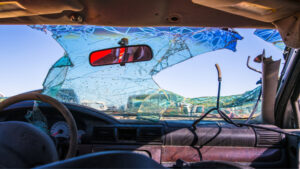There is a body of law called “strict liability” which relieves the injured party of the burden of demonstrating a specific act of negligence as the cause of the injury; it is an extension of the law of warranty. A manufacturer is strictly liable when an article he/she places on the market, knowing that it is to be used without inspection for defects, proves to have a defect that causes injury. Recognized first in the case of unwholesome food products, such liability has now been extended to a variety of other products that create as great or greater hazards if defective.
The purpose of strict liability is to insure that the costs of injuries resulting from defective products are borne by the manufacturers that put such products on the market rather than by the injured persons who are powerless to protect themselves. The policy rational behind this legal principal has been well described by one appellate court as follows; “(1) to provide a ‘short cut’ to liability where negligence may be present but difficult to prove, (2) to provide an economic incentive for improved product safety, (3) to induce the reallocation of resources toward safer products, and (4) to spread the risk of loss among all who use the product.”
The legal principal is now called the “consumer expectation test” i.e., did the product fail to preform as a reasonable consumer would have expected it to. A classic example we all studied in law school was the case of Moss v. Coca Cola Bottling Co. wherein a dead mouse was found in a Coca Cola after the thirsty worker had, unfortunately, taken a big swig. He became ill for several weeks because of the bacteria generated by the dead mouse. The court held that there was ample evidence that the Coca Cola was manufactured and bottled by the defendant and delivered without the contents being tampered with and, therefore, the evidence was sufficient to enable the jury to find that the mouse was in the bottle when delivered. Clearly, when buying a refreshing beverage you don’t expect to chug down a carbonated dead mouse.
So, If the injury-causing substance is foreign to the food served, then you may state a cause of action in implied warranty and strict liability, and the trier of fact will determine whether the substance (i) could be reasonably expected by the average consumer and (ii) rendered the food unfit or defective.
On the other hand, the courts have held that if the injury-producing substance is natural to the preparation of the food served, it can be said that it was reasonably expected by its very nature and the food cannot be determined unfit or defective under strict product liability. However, if the presence of the natural substance is due to a restaurateur’s failure to exercise due care in food preparation, the injured patron may sue under a negligence theory.
So, if you were eating a rib and you bit into it and broke your tooth it there is no case as that is natural to the food being served and it is not negligent to serve ribs on the rib. If, however, you were eating a salad and bit into a piece of metal, you may have a claim under either, or both, strict product liability and/or negligence.










